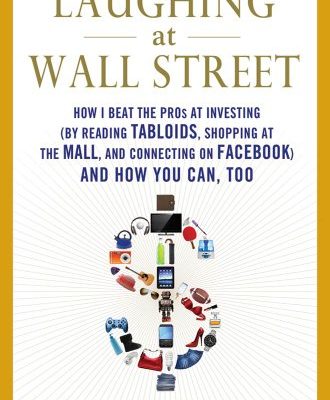Contents
And if %K falls lower than %D, then it’s seen as a selling signal – unless the values are below 20. The stochastic oscillator line is normally plotted over a period of 14 days, while the signal line is a three-day simple moving average of the %K. The stochastic oscillator is a technical indicator that enables traders to identify the end of one trend and the beginning of another.
Conversely, should a security trade near resistance with an overbought Stochastic Oscillator, look for a break below 80 to signal a downturn and resistance failure. While momentum oscillators are best suited for trading ranges, they can also be used with securities that trend, provided the trend takes on a zigzag format. In this regard, the Stochastic Oscillator can be used to identify opportunities in harmony with the bigger trend.
We introduce people to the world of https://forexarticles.net/ currencies, both fiat and crypto, through our non-drowsy educational content and tools. We’re also a community of traders that support each other on our daily trading journey. The spread I use is based on institutional quotes of a small pip fraction.
Doing so lets you see whether it is potentially oversold or overbought compared to recent highs and lows. Trendlines are great for use when trading stochastic divergence and reversal trades. Find an established trend with a valid trendline, and then wait until the price breaks the trendline when the stochastic indicator lines make a new high or low.

When the market is temporarily oversold in the uptrend, signals on a bullish reversal usually don’t work. Meanwhile, it’s likely a bearish reversal works when the market is temporarily overbought in a downtrend. We should open a trade as soon as the bar after the pattern crosses its extreme in the trend direction. We will close the position as soon as there is a cross of stochastic lines either above 80% or below 20%. At the same time, the longer the body, the more reliable the signal is. In an ideal scenario, it should cover several previous candles.
How to Use the Stochastic Indicator
It will act as a filter for your signals, as long as your trades are in the direction of the moving average. When the price is below the moving average, only look for shorts. As with most other technical analysis trading tools, this momentum indicator has its unique benefits and drawbacks. It’s important to understand where the stochastic oscillator excels and where it falls short to get the most out of its use.
- In a similar fashion, it signals a slowdown of the price decline and that there is about to be a reversal.
- On the same chart, you can see areas where the %D is not as volatile and does not always dip below or move above the 80 or 20 levels like the fast stochastic oscillator does.
- However, when you look at the stochastic oscillator indicator, the trend moves in a different direction and is slightly bullish.
- The Stochastic Oscillator is above 50 when the close is in the upper half of the range and below 50 when the close is in the lower half.
- Conversely, a value of more than 0.8 implies an overbought market condition.
- If you use a 1 minute chart to trade, you may want to set this to 5 or 7, and therefore the indicator will be based on the last 5 or 7 minutes respectively.
More extended periods to calculate the %K and SMA trend lines can make it easier to identify changes in the trend. However, you may miss a significant element of a changing trend due to the lag before you decide to buy or sell. You can adjust the full stochastic oscillator indicator variables to assist with your specific investment strategy, lengthening or shortening the periods, and adjusting the SMA. This stochastic 50-level crossover is viewed as a strong movement to the upside and interpreted as a buy signal. By contrast, when the %K line crosses below the 50 level, it’s interpreted as weakness in price movement, which signals that it’s time to sell. A moving average is a great tool to use in conjunction with stochastics.
Using only the last 14 RSI values, compute the new StochRSI values as each period ends. Stay on top of upcoming market-moving events with our customisable economic calendar. Chart patterns offer great trading opportunities because they provide objective and recurring price events that can be studied in great detail. Conversely, a low Stochastic value indicates that the momentum to the downside is strong. I am always a fan of digging into how an indicator actually analyzes price and what makes the indicator go up and down.
Traders might continuously find themselves on the sidelines if they are looking to enter the trade based on an oversold or overbought reading from RSI. Most traders now consider the StochRSI as an important momentum oscillator that is indispensable. Hidden divergence is a trend continuation signal, and the Stochastic Oscillator can be used to find these occurances. If you learn to combine the crossover signal with hidden stochastic divergence, it can offer some good trading opportunities.
The Beginner’s Guide to Stochastic Oscillators
But it’s vital for the one in the middle to have a long shadow in the direction of the completing trend, and for the next candle to have a long body. As we can see from the chart, the trade was successfully closed at the take profit level. To implement the technical indicator in the chart, press “Indicators” and choose “Stochastic Oscillator” from the dropdown list. LiteFinance gives you the chance to experiment with a free demo account, but also provides the full version of the indicator.
Furthermore, any https://forex-world.net/ analysis method that contains indicators and is given by an online forex broker will include a Stochastics calculation. I buy when the stochastic cross above 20 level and sell when the stochastic cross below 80 level. So if the market is in a downtrend and the price is at resistance, you can look to sell when the Stochastic crosses below 70. The Stochastic technical indicatortells us when the market is overbought or oversold. Whenever the fast Stochastic %K crosses above the slow Stochastic %D while being oversold, a bearish signal is generated and we should go short . Whenever the fast Stochastic %K crosses below the slow Stochastic %D while being overbought, a bearish signal is generated and we should go short .
The belief that the Stochastic shows oversold/overbought is wrong and you will quickly run into problems when you trade this way. A high Stochastic value shows that the trend has strong momentum and NOT that it is ready to turn around. The image below shows the behavior of the Stochastic within a long uptrend and a downtrend. In both cases, the Stochastic entered “overbought” , “oversold” and stayed there for quite some time, while the trends kept on going.
There are also a number of sell indicators that would have drawn the attention of short-term traders. The strong buy signal in early April would have given both investors and traders a great 12-day run, ranging from the mid $30 area to the mid $50 area. An example of such an oscillator is the relative strength index —a popular momentum indicator used in technical analysis—which has a range of 0 to 100. It is usually set at either the 20 to 80 range or the 30 to 70 range. The indicator provides buy and sell signals for traders to enter or exit positions based on momentum. The Relative Strength Index is a momentum indicator that measures the magnitude of recent price changes to analyze overbought or oversold conditions.
Bull and bear set-ups
It’s essential to keep in mind that the stochastic oscillator is a momentum indicator that shows recent price action movement is in any given market andnotthe direction or trend. Divergences form when a new high or low in price is not confirmed by the Stochastic Oscillator. A bullish divergence forms when price records a lower low, but the Stochastic Oscillator forms a higher low. This shows less downside momentum that could foreshadow a bullish reversal.
A bearish divergence occurs when an asset’s price moves to a new high, but the oscillator does not correspondingly move to a new high reading. As with most other technical analysis tools, the stochastic oscillator, too, comes with its own set of unique advantages and disadvantages. Therefore, it’s essential to understand where this momentum indicator excels and where it fails to get the most out of its use. In stock trading, market participants use two contrasting types of analysis.
Overbought & Oversold
As a rule, the https://bigbostrade.com/ changes direction before price.” As such, bullish and bearish divergences in the Stochastic Oscillator can be used to foreshadow reversals. This was the first, and most important, signal that Lane identified. Lane also used this oscillator to identify bull and bear set-ups to anticipate a future reversal. As the Stochastic Oscillator is range-bound, it is also useful for identifying overbought and oversold levels. The stochastic oscillator is built on the assumption that closing prices should confirm the current trend’s direction.
The basic premise of the indicator is that momentum precedes the price, so the Stochastic Oscillator could signal an actual movement just before it happens. The stochastic oscillators are measuring on a scale from zero to 100, which are called bands. The 20-band and 80-band are defaulting place markers that indicate the momentum status.
The Book of Trading Strategies
The greater the periods over which you calculate the simple moving average, the smoother the line. We will also take a look at how quickly you can adjust the sensitivity of the indicator. The basic concept behind the stochastic oscillator is momentum. It gives you the ability to monitor the momentum of an asset’s price.
When this phenomenon we say that a bullish divergence occurs. When analyzing the indicator’s behavior in overbought or oversold zones, it’s worth considering the reversal’s formation in order to spot a potential buy or sell signal. If the primary curve forms an acute angle, the following price movement will be intense. If the repeated break occurs after flat conditions, the move will likely be weaker but stable. Above the green oval, you can see an upward cross of %K and %D lines. Since the signal occurred below 20%, the risk of it being false is low.
Many traders use the MACD technical indicator and the stochastic oscillator, often looking for crossover points between the two. You can also see the two false overbought signals where the fast stochastic oscillator figure and the SMA dipped below 80. However, they reversed quite quickly as momentum picked up again and the chart moved back into higher territory. You will find that where there is a strong uptrend, which hasn’t been broken, at some point, there will be a pullback which can be an opportunity to buy on weakness. This is why the fast stochastic oscillator is more appropriate for short-term/day traders. The second chart is what we refer to as a “slow stochastic oscillator indicator.” It averages out the index level over a more extended period.

